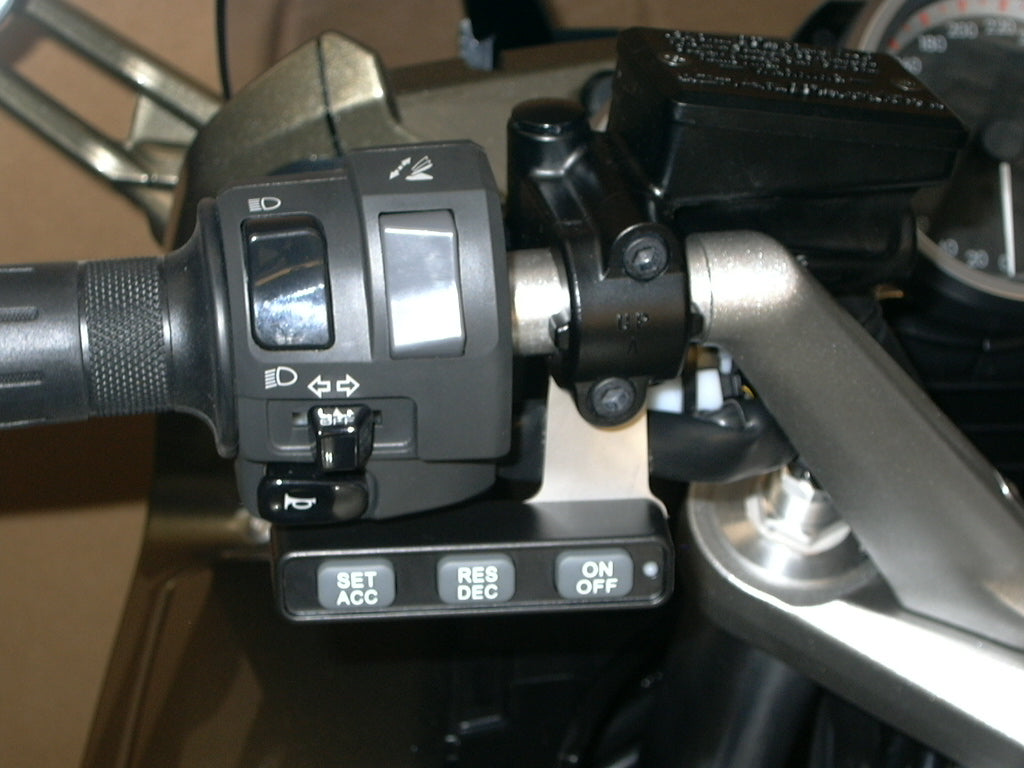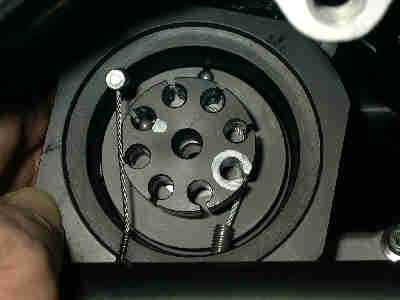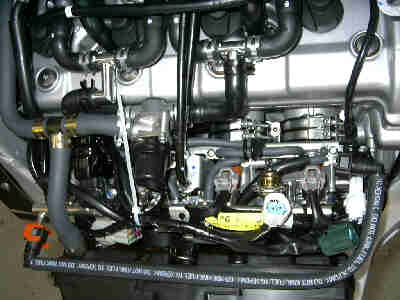 The first time I experienced a motorcycle cruise control it was an Australian made Motor Cycle Cruise fitted to a Triumph Trophy. Heaven! The boring Hume lost some of its tedium and I had a ball watching other motorcyclists do a double take when I returned their waves with my throttle hand. Tony Guymer of Motor Cycle Cruise was kind enough to fill us in on the potential benefits and the possible dangers of cruise controls.
The first time I experienced a motorcycle cruise control it was an Australian made Motor Cycle Cruise fitted to a Triumph Trophy. Heaven! The boring Hume lost some of its tedium and I had a ball watching other motorcyclists do a double take when I returned their waves with my throttle hand. Tony Guymer of Motor Cycle Cruise was kind enough to fill us in on the potential benefits and the possible dangers of cruise controls.
Motorcycle cruise control – a manufacturer’s perspective. Published in the Australian Ulysses Club Magazine 'Riding On': August 2006
Like you, Frank and I ride bikes! We are the ‘directors’ of Motorcycle Cruise Controls; which means we do everything from hand making the wiring looms to packing the kits.
Our business came about because I dropped my bike back in 1991. Actually it was more like the ‘Laugh In’ skit where the guy falls off his trike. Very wet, very slippery, very slow, under brakes, and suddenly I was flat on my side on the ground. The front wheel locked and I had no gyroscopic effect to keep me upright. Amazing that such a simple fall can do so much damage. Two cracked ribs and ‘munched’ thoracic and cervical discs. C’est la vie! The point is that after that fall, I started to get numbness in my fingers whenever I rode my bike. A Vista Cruise throttle lock sort of helped for a while, but I wasn’t happy.
In August’96 I fitted a K-Mart cruise control to my Nissan car and went to Queensland for a holiday. I got 13.8kms per litre instead of 9.8k/l, didn’t get booked and enjoyed the trip much more than expected! On my return I said to brother Frank "I want one of these on my VFR750!"
A weekend or two’s effort and lo and behold - it worked! Remarkably well actually, though I had no clutch cut-out and the connection to the throttle was with a bead chain that came with the car cruise kit. Note that my VFR has a throttle spindle that works from the side of the motor so there was a reasonable amount of clear space around the bead chain to prevent it jamming; or so I thought.
I happily cruised around for a month or so until one day, on an advanced rider training course at the Phillip Island GP circuit, I backed off on the main straight for turn one, but the bike didn’t. As you can imagine things got a bit interesting as I quickly hit the kill switch, braked as much as I could and floated through turn one on a wing and a prayer with a dead engine at about 180kph I think. I wasn’t paying that much attention to the speedo! Turns out that at full throttle it was possible for the bead chain to jam against the frame and lock the throttle partly open. After my pulse rate settled down it was back to the drawing board.

At 7:30am on Australia Day, 1997 I had a brainwave, which Frank turned into reality - our cable, interface unit (CIU). The CIU allows our cruise controls to attach to bikes without modification to the bike for nearly all model motorcycles - some BMWs being the exception. The CIU eliminates the possibility of the throttle jamming. Nearly ten years in business now prove this point, with product exported all over the world.
Since then the product has evolved as our experience grew. Our new computer, designed and built here in Australia and the software with it, has every conceivable safety feature built in – and it needs to! The cruise won’t engage if it can’t detect the brake circuit. If the brakes lose power the cruise shuts down. The brakes turn off the cruise. The clutch turns off the cruise. Rapid acceleration of the bike or a rapid rise in engine revs beyond fixed criteria shut down our cruise control. The microchip inside the computer is shielded from the rest of the bike by every possible electrical filtering device we could think of, including opto-couplers as the last line of defence. Finally, there is a mechanical lockout which isolates power from the cruise control throttle actuator whenever the bike’s brakes are applied – so the rider always stays in control.
This attention to detail is warranted. Motorcycles are almost inherently electrically noisy and they get worse as they get older. Imagine an electrical spike locking the microchip in the ‘open throttle’ position. What would then happen? The computer would not take any notice of any more signals it received – brakes, clutch, engine revs, speedo – nothing! It would quickly pull throttle and the only way to shut it down would be to turn off the power switch on the cruise control itself (if the switch physically disconnects the power. Many car cruise controls don’t!) - or to kill the engine using the engine kill switch – which is what I did on the racetrack back in 1996. With our kits the chance of any spike locking the chip is infinitesimally small, but even if it did, applying the brakes will stop the actuator doing whatever the cruise control is telling it to do.
These are critical differences from automotive cruise controls, particularly the cheaper ones. We started our business based on the premise that car cruise controls had been around for decades, consequently they must be safe and we had assurances from our suppliers that they were safe. Our own hard experience has taught us that they are simply not safe when applied to motorcycles. It is a different ballgame! Moreover, if you do a Google Internet search on 'sudden unexpected acceleration' you will be surprised to see how much discussion there is about the safety of cruise controls on cars.
It possibly sounds like I am trying to turn you off cruise controls entirely. Nothing could be further from the truth. Personally – and our customers agree – cruise control on motorcycles when used responsibly is the best accessory you can buy, bar none! They save fuel, make riding more relaxed and less stressful and allow you to pay more attention to the road, the road surface and the traffic instead of the speedo and the police. For those of us who are ‘getting on’ or suffer the indignity of a body which is damaged or not as supple as it used to be, they are indispensable. Finally, even though most of the ‘head down - bum up’ riders don’t realise it yet, cruise control is a Godsend to people owning sports bikes as well. Being able to take the load off that right wrist even momentarily is fantastic. In addition, this group of riders is probably most prone to ‘inadvertent loss of licence’ or speeding fines because a fraction of a millimetre difference in throttle equates to 10-20kph. Achieving a constant, legal speed on these motorcycles demands a surprising amount of continuous concentration. We have VTR1000 owners who can’t believe how much less tired they now get riding with our cruise control.

It might sound like I am just ‘pushing my own barrow’ or trying to justify the price, which is about the same as the high-end car cruise controls. However, I think it would be irresponsible not to inform the public of the potential dangers of putting cruise controls on bikes as well as the benefits. We are alarmed about people putting articles up on the internet on ‘how to fit (cheap) car cruise controls to motorcycles’ with no mention of the dangers or possibilities fitting these units present to the rider. One of these proposes fitting the ‘bead chain throttle linkage’ to the FJR1300 – an inline four-cylinder motorcycle with no clear space where the bead chain goes and lots of things to jam the throttle. On a 100hp plus motorcycle this is terrifying! None of the articles make any mention of the possibility of the chip being locked by electrical spikes. If these bikes pull full throttle the brakes won’t stop them, unlike most cars.
If this article saves just one life it has been worth it. We ride bikes too! It is tough enough staying alive out there without throwing unexpected acceleration into the mix, through ignorance.
Tony Guymer